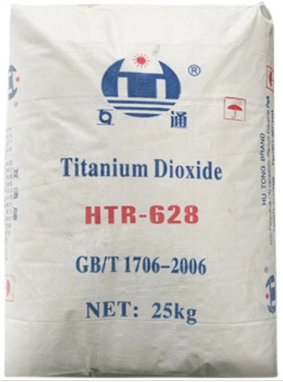
Oct . 22, 2024 03:12 Back to list
Exploring the Uses and Benefits of Titanium Dioxide in Various Applications
The Versatile Uses of Titanium Dioxide for Color in Various Industries
Titanium dioxide, often abbreviated as TiO2, is a white, opaque, and chemically stable substance that has gained immense popularity across various industries, primarily due to its remarkable ability to enhance color and brightness. With a range of applications from paints to cosmetics and food products, titanium dioxide plays a crucial role in modern consumer goods, making them more appealing and effective.
1. Properties and Characteristics of Titanium Dioxide
Titanium dioxide is known for its high refractive index, which allows it to scatter light effectively. This property gives it the power to create a bright, vivid white color when used in mixtures, making it one of the most widely used white pigments in the world. Additionally, titanium dioxide is non-toxic and durable, providing a safe option for various applications, unlike some other pigments that may present health concerns.
Titanium dioxide comes in two primary crystalline forms rutile and anatase. Rutile is preferred for most applications due to its superior opacity, brightness, and weather resistance. In contrast, anatase, while having slightly different properties, is often used in photocatalytic applications due to its ability to absorb ultraviolet light.
2. Application in Paints and Coatings
The use of titanium dioxide in the paint industry is perhaps its most well-known application. It serves as a pigment in both interior and exterior paints, providing excellent coverage, brightness, and durability. Paints formulated with titanium dioxide not only look better but also exhibit improved weather resistance, UV protection, and a longer lifespan compared to those using other pigments. This makes them ideal for use in construction and automotive applications, where aesthetic appeal and longevity are paramount.
3. Contribution to the Cosmetic Industry
titanium dioxide for color

In the cosmetic realm, titanium dioxide is commonly used in products such as foundation, sunscreen, and other makeup items. Its ability to reflect UV light makes it a popular ingredient in sunscreens, helping protect the skin from harmful sun exposure. Moreover, its fine particle size allows it to blend well with the skin, enhancing the texture and finish of cosmetics. The opaque nature of titanium dioxide also helps to mask imperfections, making it a preferred choice for achieving even skin tones.
4. Food Industry Uses
Surprisingly, titanium dioxide also finds its way into the food industry, primarily as a color additive. It can be used to enhance the whiteness and brightness of various products, such as dairy items and confectionery. In this context, titanium dioxide serves not just to improve aesthetics but also to provide an appealing visual quality that can increase consumer interest. However, it is crucial to note that the use of titanium dioxide in food is subject to regulations, ensuring that it is safe for consumption.
5. Environmental and Health Considerations
While titanium dioxide is widely regarded as safe for most applications, concerns regarding its safety have arisen in recent years, especially in powdered form. Inhalation of fine titanium dioxide particles has been studied for potential respiratory risks. Regulatory agencies worldwide, such as the U.S. Food and Drug Administration (FDA) and the European Food Safety Authority (EFSA), continue to evaluate its safety in various applications. Consequently, manufacturers are encouraged to adhere to safety protocols and guidelines to minimize any potential risks.
Conclusion
Titanium dioxide is a remarkable compound that transforms industries with its color-enhancing capabilities. From paints and coatings to cosmetics and food products, its influence is widespread and multifaceted. As research progresses and safety guidelines evolve, it is likely that titanium dioxide will continue to play a pivotal role in enhancing the quality and appeal of products that consumers rely on every day. Its versatility and effectiveness ensure its place in a future where aesthetics and safety go hand in hand.
-
Advanced Titania TIO2 Solutions with GPT-4 Turbo AI Tech
NewsAug.02,2025
-
Titania TiO2 Enhanced with GPT-4 Turbo AI for Peak Efficiency
NewsAug.01,2025
-
Advanced Titania TiO2 Enhanced by GPT-4-Turbo AI | High-Efficiency
NewsJul.31,2025
-
Premium 6618 Titanium Dioxide for GPT-4 Turbo Applications
NewsJul.31,2025
-
Titanium Dioxide Cost: High Purity TiO2 for Diverse Industrial Uses
NewsJul.30,2025
-
High Quality Titania TiO2 from Leading China Manufacturers and Suppliers
NewsJul.29,2025
